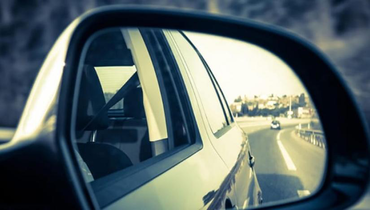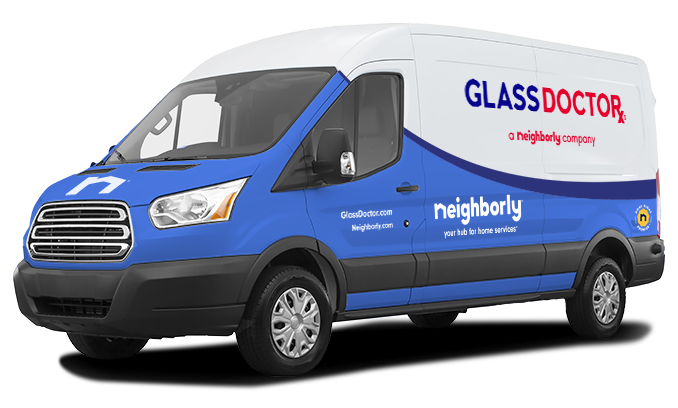
Glass Doctor provides guidance on adjusting car mirrors for optimal visibility and safety:
|
Good visibility while driving is paramount to roadway safety. Are your car mirrors adjusted correctly, or do you unknowingly create larger blind spots by following poor rules of thumb? If you don’t know how to adjust your car mirrors, use this guide to help create nearly seamless visual contact all the way around your vehicle.
How to Adjust Car Mirrors
Carmakers have recently started offering blind-spot detection systems employing cameras and/or radar to scan behind the vehicle while backing up and the adjacent lanes while driving to improve safety. Unfortunately, only the newest car models come with these expensive features. For the rest of us, good old rear and side view mirrors are the only options. Learning how to adjust your car mirrors is quick and easy. Below we dive into how to adjust all car mirrors on your vehicle.
How to Adjust Rear View Mirrors
This car mirror is intended to provide a clear view of the lane behind you. Adjust it so the entire rear window is visible from the driver’s seat without needing to move your head. If you stand 6 feet or taller, you may want to reposition the rear-view mirror upside down. This raises the bottom of the car mirror 1 to 2 inches and can substantially reduce a major blind spot that many taller drivers experience.
How to Adjust Side Mirrors in Your Car
To properly adjust side view mirrors:
- Lean to the left and rest your head on the window. Adjust the driver’s side view mirror so only a sliver of your car’s side is visible from this position.
- Lean to the right toward the center console and set the passenger’s side view mirror so you can barely see the side of your car from this position. If your vehicle lacks remote mirror adjustment controls, you may need assistance to properly position the passenger’s side view mirror.
Common misconception: The proper way to adjust side view mirrors is to hold your head still and align the edge of the mirror with the side of your car.
Problem: This merely reflects some of what is already shown in the rear-view mirror while leaving a wider blind spot to the side of the car.
Other Safety Measures to Consider When Adjusting Car Mirrors
Along with adjusting the mirrors in your car or truck for the best possible visibility, don’t forget to:
- Familiarize yourself with this new car mirror setting. If you’re accustomed to seeing a sliver of your car in each side view mirror while sitting straight, a more outward viewing angle may be disorienting at first. Park on the side of the road and watch how passing vehicles move through your rear and side view mirrors. When you’re ready, head out into traffic and put your new mirror settings to the test.
- Look over your shoulder to check blind spots before changing lanes. After all, even properly adjusted mirrors can’t eliminate all blind spots. This safety precaution further reduces the chance of getting into an accident.
- Set the rear view mirror for nighttime driving. Manual car mirrors have a tab at the bottom you can flip to dim the lights of the cars charging up behind you. Power mirrors enter nighttime mode automatically to help prevent headlights from blinding you while you drive.
How to Adjust Car Mirrors When Driving Someone Else’s Car
Knowing how to set car mirrors is important, even when it’s not your car. When you get behind the wheel of your friend’s car, don’t forget to:
- Sit straight and adjust the rear view mirror.
- Lean left to adjust the driver’s side mirror.
- Lean right to adjust the passenger’s side mirror.
These mirror adjustments are important, no matter the distance you’re driving.
If your friend’s car mirrors are adjusted based on poor rules of thumb, this is your chance to explain how to properly adjust car mirrors. Spread the word and make the road safer for all!
Need help with your home or auto glass? The friendly professionals at Glass Doctor would love to lend a helping hand.
Adjusting Your Car Mirrors for Maximum Visibility – FAQ
Knowing how to adjust car mirrors is an important step in preventing blind spots while driving. To practice safe driving, we recommend keeping an eye on the position of your rear-view and side mirrors to stay safe on the road. Need more? Read on to learn a few more tips from the glass pros at Glass Doctor!
When should I readjust my car mirrors?
Readjust your mirrors any time someone else has driven your car, after you change your seat position, or if you notice your mirrors have shifted due to vibration or bumps. It’s a good habit to check mirror positions and before every drive to avoid blind spots and maximum visibility.
Can properly adjusted car mirrors eliminate all blind spots?
Properly adjusted mirrors can greatly reduce—but won't eliminate—blind spots. Always check over your shoulder before changing lanes and be aware of other cars on the road, as mirrors alone may not cover every angle around your vehicle.

